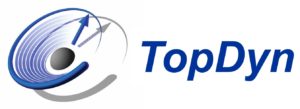

Seminar über die Physik der kondensierten Materie (SFB/TRR173 Spin+X und SFB/TR288 Kolloquium, TopDyn-Seminar)
June 2, 2016 at
5:15 p.m.
in
LORENTZ-Raum, 05-127, Staudingerweg 7
Univ-Prof. Dr. Jure Demsar
Univ.-Prof. Dr. Hans-Joachim Elmers
Univ.-Prof. Dr. Mathias Kläui
Univ.-Prof. Dr. Thomas Palberg
Ultra cold beam: electrons/ions/atoms/molecules
Prof. Daniel Comparat (Laboratoire Aimé Cotton, CNRS, Orsay, France)
Standard electrons source have all energy spread above 0.3 eV. On the contrary the initial energy dispersion of a Magneto-Optical Trap for cold atoms is in the 10 neV range. Thus by ionizing cold atoms we expect to realize a bright and monoenergetic electron source. Based on an atomic beam, or on a standard 3D optical cooling, our cesium cold atom source is ionized either by a continuous or a pulsed laser.
We study the behavior of the electron beam produced using time of Flight or velocity imaging methods. Then the main idea is to combine this novel low energy highly monochromatic electron source with an Electron Controlled Chemical Lithography experiment and with a 3D and energy resolved photoemission electron microscope (k-PEEM). This unique combination should allow focusing monoenergetic (~1 meV) and very low energy electron (1-10 eV) down to unprecedented nanometer spots. The exclusive injection and diagnostic microscope, with such high spatial and energy resolution, will open the way towards control chemical reactions at the molecular level. During this presentation we will mainly explain the status of the experimental setup and detail the ionization process that involved electric field ionization of excited cold atoms.
An extension of this work involves molecules. Indeed, Cooling and trapping molecules at ultracold temperatures (<1 mK) has been one of the most challenging tasks in experimental quantum physics for the last decade. A breakthrough in this field would give access to new quantum chemistry, studies of collective effects, metrology of fundamental constants, etc. Unfortunately, the successful laser cooling technique is rarely helpful in this context. Therefore, direct cooling of molecules is generally based on super-sonic expansion, cryogenic, or velocity filtering. All these methods suffer from the fact that they produce cold sample of molecules moving at velocities of some hundred meters per second.
Thus the problem to be solved has become: how to stop molecules in the laboratory frame? Nowadays, many experiments use electromagnetic decelerators acting on the electric or magnetic permanent molecular dipole moment. It does work, but they are many drawbacks, such as high losses, cumbersome apparatus, etc.
We have suggested a new approach consisting in electrically charging cooled neutral molecules, decelerating the resulting anions over short distances, and finally removing the extra electron by photo-detachment. If such a demonstration is successful, it will be a very important result for the cold molecule community. At middle term perspective, we consider some “applications” such as violation parity measurement, creation of cold ion sources with the view of surface doping (NV centers in diamond for example).